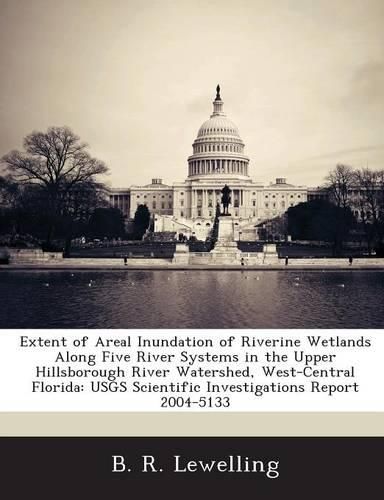Readings Newsletter
Become a Readings Member to make your shopping experience even easier.
Sign in or sign up for free!
You’re not far away from qualifying for FREE standard shipping within Australia
You’ve qualified for FREE standard shipping within Australia
The cart is loading…






Riverine and palustrine wetlands are a major ecological component of river basins in west-central Florida. Healthy wetlands are dependent, in part, upon the frequency and duration of periodic flooding or inundation. This report assesses the extent, area, depth, frequency, and duration of periodic flooding and the effects of potential surface-water withdrawals on wetlands along five river systems in the upper Hillsborough River watershed: Hillsborough and New Rivers, Blackwater and Itchepackesassa Creeks, and East Canal. Results of the study were derived from step-backwater analyses performed for each of the river systems using the U.S. Army Corps of Engineers Hydrologic Engineering Center-River Analysis System (HEC-RAS) one-dimensional model. Step-backwater analyses were performed based on daily mean discharges at the 10th, 50th, 70th, 80th, 90th, 95th, 99.5th, and 99.97th percentiles for selected periods. The step-backwater analyses computed extent of inundation, area of inundation, and hydraulic depth. An assessment of the net reduction of areal inundation for each of the selected percentile discharges was computed if 10 percent of the total river flow were diverted for potential withdrawals. The extent of areal inundation at a cross section is controlled by discharge volume, topography, and the degree to which the channel is incised. Areal inundation can occur in reaches characterized by low topographic relief in the upper Hillsborough watershed during most, if not all, selected discharge percentiles. Most river systems in the watershed, however, have well defined and moderately incised channels that generally confine discharges within the banks at the 90th percentile. The greatest increase in inundated area along the five river systems generally occurred between the 95th to 99.5th percentile discharges. The decrease in inundated area that would result from a potential 10-percent discharge withdrawal at the five river systems ranged as follows: Hillsborough River, 7 to 940 acres (2.0 to 6.0 percent); and New River, 0.2 to 58.9 acres (0 to 11.9 percent); Blackwater Creek, 3.3 to 148 acres (2.2 to 9.4 percent); Itchepackesassa Creek, 1.0 to 104 acres (0.9 to 10.8 percent); and East Canal 0.7 to 34.6 acres (0.5 to 7.6 percent).
$9.00 standard shipping within Australia
FREE standard shipping within Australia for orders over $100.00
Express & International shipping calculated at checkout
Riverine and palustrine wetlands are a major ecological component of river basins in west-central Florida. Healthy wetlands are dependent, in part, upon the frequency and duration of periodic flooding or inundation. This report assesses the extent, area, depth, frequency, and duration of periodic flooding and the effects of potential surface-water withdrawals on wetlands along five river systems in the upper Hillsborough River watershed: Hillsborough and New Rivers, Blackwater and Itchepackesassa Creeks, and East Canal. Results of the study were derived from step-backwater analyses performed for each of the river systems using the U.S. Army Corps of Engineers Hydrologic Engineering Center-River Analysis System (HEC-RAS) one-dimensional model. Step-backwater analyses were performed based on daily mean discharges at the 10th, 50th, 70th, 80th, 90th, 95th, 99.5th, and 99.97th percentiles for selected periods. The step-backwater analyses computed extent of inundation, area of inundation, and hydraulic depth. An assessment of the net reduction of areal inundation for each of the selected percentile discharges was computed if 10 percent of the total river flow were diverted for potential withdrawals. The extent of areal inundation at a cross section is controlled by discharge volume, topography, and the degree to which the channel is incised. Areal inundation can occur in reaches characterized by low topographic relief in the upper Hillsborough watershed during most, if not all, selected discharge percentiles. Most river systems in the watershed, however, have well defined and moderately incised channels that generally confine discharges within the banks at the 90th percentile. The greatest increase in inundated area along the five river systems generally occurred between the 95th to 99.5th percentile discharges. The decrease in inundated area that would result from a potential 10-percent discharge withdrawal at the five river systems ranged as follows: Hillsborough River, 7 to 940 acres (2.0 to 6.0 percent); and New River, 0.2 to 58.9 acres (0 to 11.9 percent); Blackwater Creek, 3.3 to 148 acres (2.2 to 9.4 percent); Itchepackesassa Creek, 1.0 to 104 acres (0.9 to 10.8 percent); and East Canal 0.7 to 34.6 acres (0.5 to 7.6 percent).